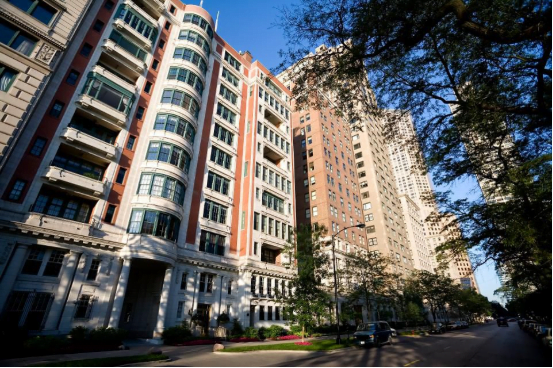04.11.19
Forbes: Why Rent Control Isn’t An Affordable Housing Solution

Rent control is a hot topic nationally, and especially in my local market, Chicago. However, the real issue at hand is not rent control. The issues are the lack of affordable housing and the disparity of income, particularly within cities. Although there are dozens of potential strategies for increasing the supply of affordable housing and adjusting income disparity, my strong opinion is that using rent control is the worst possible tactic. While the advocates for rent control come from a good place, I believe they are misdirected. Let me explain why.
The Landlord’s Investment
Let’s first address why someone buys an apartment building and what that investment looks like. An apartment owner invests in an apartment building for the same reason anyone invests in anything: to get a return on the investment. It is important to understand that apartments are a popular investment class, resulting in more buyers and lower average returns to investors than other types of commercial real estate investments. This means profit margins for apartment investors are already thin.
In a free market system, all prices adjust to the market. This does not just include rent levels (the revenue), but also affects an apartment owner’s expenses such as the price of gas, water, electricity, taxes and all other costs. Any normal market adjustment to revenue or expense has a dramatic effect on the apartment owner’s return on investment.
Rent Control’s Inherent Problem
With the above elementary explanation of an apartment owner’s investment, rent control’s inherent problem is simple. Rent control sets a limit on the rents an apartment owner can charge for each specific unit type (studio, one-bedroom, etc.), eliminating the free market influence and freezing the rents at that level. The issue with rent control for an apartment owner is that none of the expenses of owning a building are frozen. With rent control, the investor experiences an ever diminishing return, ultimately resulting in an operating loss. When a building is running at a loss, to maintain a return of any kind, or simply pay the expenses of the building, the owner is forced to cut expenses. If “hard costs” like taxes and utilities cannot be reduced, the only way to keep the building from losing money is to cut the “soft costs,” like repairs and tenant services. An example is a bad roof the owner cannot afford to fix so it continues to leak. When soft costs are cut, the quality of the housing begins to deteriorate exponentially, leading to the deterioration of the building.
History shows cities that have implemented rent control can experience a new class of apartment owners: slumlords. The reality I see is that rent control creates slumlords because it only examines one part of the equation (revenue) and places the entire burden on the owner, rather than on society. The average apartment owner in a rent-controlled market does not set out to treat their tenants poorly; however, these situations occur when the free market system is incorrectly influenced. Slumlords are a natural result of an unnatural influence on a basic free-market economic principle.
Alternatives To Rent Control
While rent control is not a sustainable solution, the availability of affordable housing can be increased through other strategies. One idea is an incentive program, proposing that if a property owner agrees not to increase their rent of a specific unit type, in return they would receive a freeze or reduction in rate on property taxes or utilities. Another idea already being implemented is opportunity zones, which are intended to create investment and improvement in properties in economically challenged areas in exchange for favorable capital gains tax treatment over a long-term investment.
Another strategy is rent subsidies for lower-income tenants — think Section 8. In this program, the federal government assists lower-income tenants by paying the market-rate gap, meaning the tenant has a subsidy payable to the property owner making up the portion of the rent that exceeds the amount that is affordable based on the income of the tenant. HUD has converted to a voucher system, meaning the tenant can take the voucher to a property that does not carry a Section contract. This program should be expanded because most large cities have a multiyear waiting period for deserving tenants to receive vouchers.
Addressing Income Disparity
The root cause for additional affordable housing solutions is income disparity. Too many people are not able to make enough money to afford market-rate rent. The most common solution I’ve seen to income disparity is raising the minimum wage. Opponents say that increasing the minimum wage will also increase the price of all goods and services. I agree that this will happen, but the result affects all society and the burden is shared more equally. Lessening income disparity should be the primary focus of our government to address the affordable housing crisis.
Sharing The Burden
Affordable housing should be shared by society through incentives, programs and subsidies. Rent control as a strategy for affordable housing only burdens the property owner and ultimately results in declining returns, property values and the condition of buildings.
Given current sensitivity to entitlement and wealth, too many people incorrectly assume that “landlords can afford it.” I’m a broker of apartment buildings in Chicago. While many apartment buildings are indeed owned by large firms, the vast majority of multifamily housing is owned by working-class people who have saved to buy a building, typically to support their retirement. They operate these buildings on evenings and weekends when they are not working at their primary job. These are not “wealthy landlords.” A single vacant unit is painful and makes it difficult to cover all the expenses of running the building. Imposing rent control on these investors would be catastrophic.
The issues we need to be addressing as a society are affordable housing and lessening income disparity. Although rent control advocates’ hearts are in the right place, rent control to affordable housing is like taking antibiotics for the flu: Not only will you not cure the flu by taking antibiotics, you’ll create all kinds of other problems for an otherwise healthy body.
